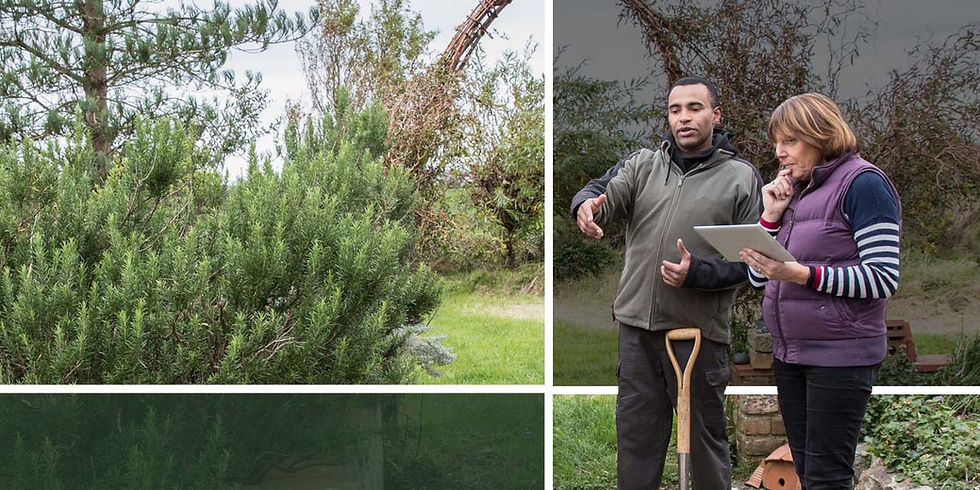Mulching: Should you remove old mulch?
- Rooted in Nature

- Dec 6, 2022
- 2 min read
Updated: Apr 30, 2024

When maintaining your landscaping, one of the most important projects you’ll do is mulching. People often ask if they should remove mulch from the previous year before putting down a fresh layer. Surprisingly, many gardeners answer this question with a resounding “no!”
So, should you remove old mulch? Expert green thumbs contend that getting rid of last year’s mulch is completely unnecessary. Mulch gradually breaks down, adding beneficial nutrients and other organic matter to the soil. Removing pre-existing mulch every year only ends up to be extra work, we do often help with this for aesthetic reasons though as mulch does fade over time, and it is often a person preference for many home landscapers.
At the beginning of the spring, check to see how much mulch was left intact from the year before. This helps you to determine how much new product to buy. Ideally, a layer of mulch should stand at about two inches high on flowerbeds and at about three inches high over shrub beds and around tree stumps. If that amount already exists in your yard, it is not necessary to add new mulch. However, if you’re down to an inch, top off the old layer with an additional inch of new mulch to keep it at its optimum level.
Sometimes, mulch can knit together and start to mat–shredded hardwood in particular. Matted mulch can hinder rain and sunlight from soaking through and feeding the plant roots beneath the soil. To prevent mats, removal is not the answer. Instead, fluff the mulch using a rake or cultivator and then add more mulch to the top. If, however, the matted mulch has developed a fungus or mold, treat it with a fungicide or remove it completely, depending on the severity of the damage.
For in-depth answers about mulching or any other of your landscaping questions, contact us at 443-846-0199 or info@rootedinnaturemd.com.



Comments